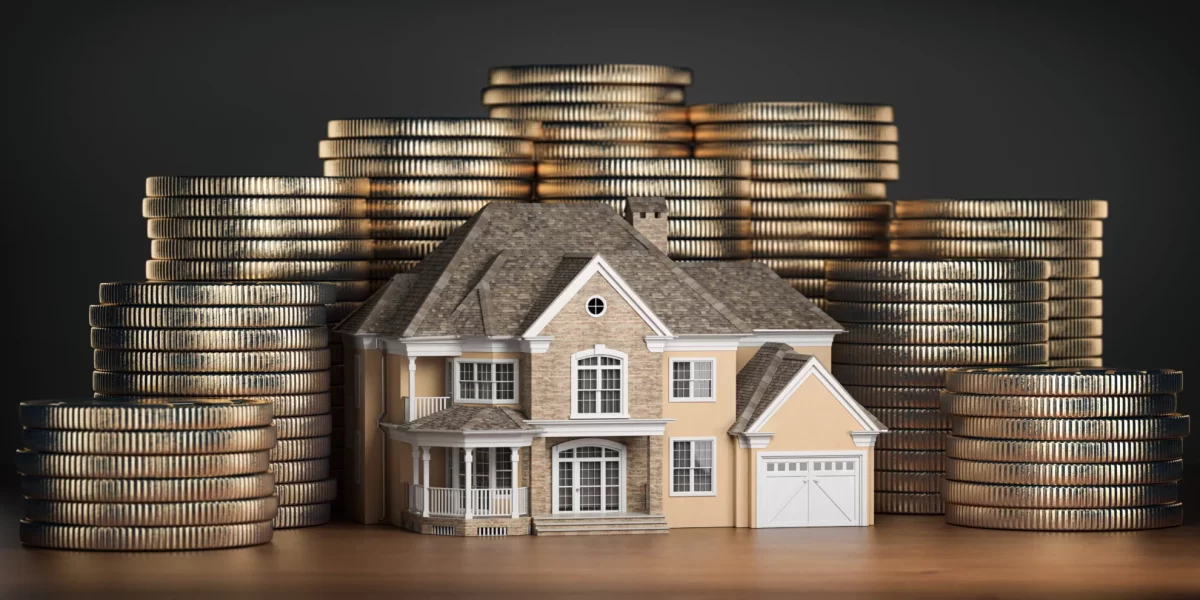Now is one of the best times to become a multifamily landlord because apartment vacancies and interest rates remain low compared to a few years back. Private equity investors can also access a pool of lucrative debt capital.
What’s more, the White House notes that there’s a thirst for decent housing coupled with a chronic undersupply, leading to skyrocketing housing prices, as seen in the table below:

Statistics show that investors should expect a 6% net increase in their income for the coming year. All this signals that multifamily properties are a lucrative investment ripe for purchasing.
Suppose you are new to Commercial Property Investment and do not understand why you should invest in multifamily property. In that case, these are the reasons why this kind of property must be a part of your investment portfolio.
1. Increased Cash Flow
A higher cash flow is one of the biggest reasons to invest in multifamily property. Such properties are always in demand by rookies and seasoned investors alike.
You can expect a high occupancy rate if your property is in a strategic location. With time, this leads to increased monthly revenue.
One way to ensure you rake in good profits is to invest in different geographical locations. Doing so allows you to have multiple income streams from the same type of investment.
2. Easy To Manage
Managing 12 units in one multifamily property is more manageable than 12 single-family units spread out across the city. With the former, you can manage it or hire a property manager instead.
It is impractical and costly to hire 12 managers to manage single-family units. On the other hand, hiring a manager for a multifamily property makes sense because of the number of tenants you are dealing with under one roof.
3. Enjoy Tax Breaks
A multifamily property makes you eligible to enjoy tax breaks as a reward from the government for providing housing for city residents. The kind of tax breaks you enjoy depends on the property classification.
That’s because you can write off expenses from taxable income. In short, you can deduct repair, maintenance, and management expenses from the taxable income produced by the multifamily property.
4. Lower Investment Risk
This is not to say that multifamily properties do not come with risks–they carry some risks like any other investment. The only difference is that the risks associated with this kind of property are lower than single-family units, as the table below illustrates:

One of the risks you may encounter is the vacancy rate. Because you are dealing with several tenants at a time, the possibility of 0% occupancy is slim to none.
Suppose you have a well-maintained property with fair rental rates. In that case, a low occupancy is something you will rarely worry about.
Also, ensure you research the property beforehand, choose a good location, and market it well. Doing this will guarantee you a high occupancy rate.
5. Short-Term Leases Are Advantageous
Five years and more is the standard term for most commercial and retail leases. If the market changes, you are stuck with properties whose rent you cannot increase. With multifamily properties, the leases are shorter, typically lasting a year.
This means that you can raise rents quickly depending on market conditions and inflation. Shorter leases ensure your property stays lucrative in the long run.
6. Quickly Build An Investment Portfolio
If you want to delve into real estate full-time, this is one of the best ways to boost a portfolio quickly. Multifamily properties offer the chance to invest in multiple units without the hassle of managing several separate housing units.
Think about all the research, planning, permits, and cost it takes to invest in one property. Now multiply that by several units, and you know why a multifamily property is the best option.
Moreover, you’ll find it easier to purchase a multifamily property than buying a single-family unit.
7. Strong Rental Demand From Millennials
Data from the U.S Census Bureau shows that renting is the most common form of housing for millennials. Currently, the millennial generation is the largest in the U.S.
One reason why they find leasing a favourable option is the increasing cost of median home prices. This places homeownership out of reach for many. Also, millennials value flexibility and mobility over owning property.
Combined, all these reasons make millennials more likely to rent than own, spelling good news for multifamily property investors.
8. High Appreciation Rate/Value Retention
Multifamily properties continue to hold value even if you do not get immediate cash flow. The general rule for real estate is that it appreciates over time. With multifamily property, the appreciation rate is higher.
Sure, this is not set in stone. But the best way to ensure the property retains its value is to maintain and repair it often. Check for broken or damaged areas, mold, and more issues between tenants, and it will hold its value with time.

9. Better Financing Options
Data shows that multifamily investments have better funding terms overall than other real estate types. Understand that this investment type costs more initially, but it is easier to maintain than other property types.
Expect lower interest rates if you opt for a mortgage loan for a multifamily property. This is a relatively risk-free investment for first-time investors. Because of the high occupancy rates, financing institutes view multifamily properties as having lower risk.
10. Insurance Simplicity
Buying insurance for a multifamily property is relatively easy. Like financing, getting insurance is a simple process compared to other real estate types. Several factors affect how much a policy will cost.
However, the number of units in the building, amenities like a pool or rooftop terrace will raise the insurance cost. This is because tenants or visitors are more likely to injure themselves on the property. It would help if you also understood that insurance premiums for multifamily homes are rising.
Despite this, most insurance companies know how to cover multifamily properties in a way that favors you. Further, if you have several such properties, some insurance companies will grant you a “blanket” cover, insuring all the properties under one provider.
Final Word
Investing in a multifamily property is one of the best decisions you can make today. You can look forward to better cash flow, lowered risk, tax breaks, easier management, and a higher appreciation rate. Taking help of a property investment company can prove to be of greater help in terms of huge capital gains to fill up your pockets. Despite stiff competition and an initial high investment cost, a multifamily property is still an excellent investment opportunity.
www.redpillkapital.com
If you simply need more information. have questions, or want to discuss a specific deal, I’m always excited to help. Reach out to me at info@redpillkapital.com
If you are ready to start your journey to financial freedom but want specific additional educational materials, we have a course designed for physicians.





